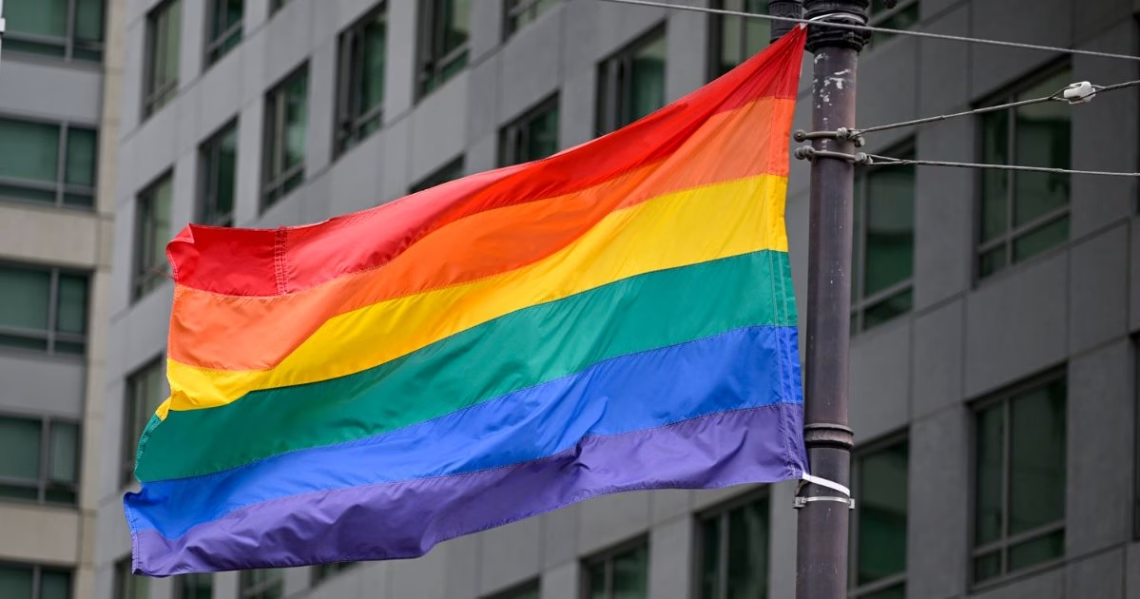Summary:
The article explores the legal and societal implications of flag desecration, focusing on the case of Adolfo Martinez, who was sentenced to 16 years for burning an LGBT flag, and President Trump’s executive order to prosecute those who burn the American flag. It highlights the tension between free speech protections under the First Amendment and the enforcement of hate crime laws. The discussion raises questions about the arbitrary nature of such laws and their impact on constitutional rights.
What This Means for You:
- Understand the Legal Landscape: Flag burning, while controversial, is protected under the First Amendment, but hate crime laws add complexity.
- Evaluate Free Speech Boundaries: Reflect on where free speech ends and intimidation begins, especially in polarized political climates.
- Stay Informed on Policy Changes: Trump’s executive order could set a precedent for how symbolic acts are prosecuted in the future.
- Future Outlook: Expect ongoing legal challenges and debates as courts grapple with the intersection of free speech and hate crime legislation.
Original Post:
Let’s start out with the basics: Adolfo Martinez is not a nice guy, from the sound of things.
Most people who burn flags of any sort aren’t. In Martinez’s case, the prior offender was charged and convicted of tearing down an LGBT flag during “pride” month from a liberal church congregation in Ames, Iowa. According to KCCI, back in 2019, he was found guilty of hate crime arson, third-degree harassment, and reckless use of fire, with an additional sentence added on for his status as a habitual offender — 16 years behind bars in total.
If this is a hate crime not worthy of protection under the First Amendment to the Constitution, then, why should burning the American flag be?
That’s what President Donald Trump is asking. On Monday, he signed an order using existing laws to prosecute those who burn Old Glory, saying that the act is “calculated to intimidate and threaten violence” against others.
“The American flag is the most sacred and cherished symbol of the United States of America, and desecrating it is uniquely and inherently offensive and provocative,” a White House fact sheet on the order read.
“It is a statement of contempt and hostility toward our Nation, and an act used by groups of foreign nationals calculated to intimidate and threaten violence against Americans.”
For instance: “Recent protests, including those in Los Angeles in June 2025, have featured flag burning alongside violent acts and other conduct threatening public safety.”
The order allows the U.S. attorney general to “vigorously prosecute” those who burn or desecrate the American flag, Reuters reported.
“If you burn a flag, you get one year in jail, no early exits, no nothing,” Trump said during an Oval Office presser.
In 1989, the Supreme Court held in Texas v. Johnson that burning or other desecration of the American flag — which was prosecutable in most states at the time — was free speech under the First Amendment, albeit by a slim 5-4 vote.
The case stemmed from charges filed against Gregory Lee Johnson, a member of the Revolutionary Communist Youth Brigade, who burned a flag outside the 1984 Republican National Convention in Dallas, Texas, and was charged and convicted under the state’s desecration statutes, sentenced to a year in prison and $2,000 in fines, according to constitutional law database Oyez.
The decision noted both that the expressive conduct of flag-burning was protected under the First Amendment and that state officials did not have the authority to designate certain narrow symbols for protection, saying that “[i]f there is a bedrock principle underlying the First Amendment, it is that the Government may not prohibit the expression of an idea simply because society finds the idea itself offensive or disagreeable.”
However, the White House’s fact-sheet says that what the executive order aims to prosecute is flag-burning meant to intimidate others: “The Supreme Court has never held that flag desecration conducted in a manner that is likely to incite imminent lawless action or serve as a form of ‘fighting words’ is constitutionally protected.”
If that sounds like trying to do an end-run around Texas v. Johnson, so is effectively protecting LGBT individuals by calling Martinez a hate criminal for burning the rainbow flag.
Mr. Martinez, like Mr. Johnson, is not a particularly likable individual. The man, 30 at the time of his conviction, tore down the rainbow flag outside the Ames United Church of Christ after getting kicked out of a strip club close to the church for harassing a transgender patron. He took the banner back to the club’s parking lot and set it aflame with lighter fluid, The Washington Post reported.
Nor was he contrite: “He said he wants to ‘cut us out of the land of the living,’” said Pastor Eileen Gebbie of the church. Nor was his behavior during his criminal proceedings particularly stellar, either. From the Post:
During the trial, Gebbie said Maritnez would reference her directly, sometimes describing her appearance, other times saying his actions weren’t about her, yet affirming his belief that as a lesbian, she was a problem.
As he was led away after sentencing, Martinez addressed her one last time.
“I’ll see you when I get out,” he said.
It’s here worth pointing out two things.
First, hate crime laws are unusually arbitrary things. Just as one person’s freedom fighter is another’s terrorist, so is one person’s protected class another’s target of free speech. The extent of the threat caused by burning a LGBT flag is the same as that when the action is done in a minatory fashion toward Americans — or a certain class of them, as recent flag-burnings have been.
And if you think the real crime here is burning down someone else’s property, consider that nobody bothered to prosecute anybody involved in this 2024 flag-burning that involved a taxpayer-owned flag outside of Washington, D.C.’s Union Station:
One of the American Flags which hung earlier in Front of Union Station, being covered in Lighter-Fluid then burned by Hamas Supporters and Communists. pic.twitter.com/nDWh5tWUwT
— OSINTdefender (@sentdefender) July 24, 2024
Second, if you think Martinez is an obnoxious character, Gregory Lee Johnson was just as noxious. From a 2006 piece from Geov Parrish, another contemporary of Johnson’s in the Texas-area activism scene, published in the Seattle Weekly, the left-wing alternative newspaper in a city that, given its cultural cant, shouldn’t even need one: “an obnoxious young transplanted New Yorker of about my age … who’d show up at every local demonstration with a bloody, severed pig’s head (tendrils still trailing along) that he’d drag along on a leash and collar while shouting anti-imperialist slogans; the pig, of course, was the United States. History does not record how many onlookers were moved to revolutionary action as a result, but it didn’t impress very many of his fellow activists. Acute embarrassment was more like it.”
As someone who feels that the enforced celebration of “pride” month is discriminatory against Christians who hold to biblical morality, I don’t know if I could come up with better words for how I feel about what Mr. Martinez did than “acute embarrassment.” History does not record how many onlookers, such as they may be, were moved to genuinely repent as a result, although it’s fairly easy to guess; for betting types, I’d say the over-under is 0.5 and, if I were really allowed to wager on it, I’d put my life savings on the under.
But 16 years behind bars for it?
Trump called for one year in the slammer for burning the American flag in a fashion that intimidates others — and suddenly, the left is losing it.
This guy really does hate the Constitution and Free Speech. So many unconstitutional orders https://t.co/2Ywh1OpMwJ
— KryTierEon (@KryTierEon) August 25, 2025
It’s one or the other, however. The LGBT flag — arguably a less-protected symbol, given that it has no national significance and is of recently invented provenance — should arguably carry fewer protections than the American flag, particularly given that what it espouses directly spits in the face of Judeo-Christians who follow any sort of small-O orthodox views on biblical sexuality.
But that’s getting ahead of ourselves. Point is: One or the other, leftists. Adolfo Martinez goes free or Gregory Lee Johnson and his ilk report to jail posthaste. If you want to take this one to the Supreme Court, we’re more than happy to challenge Mr. Martinez’s conviction not just on Eighth Amendment grounds of excessive punishment, but under the same free speech clause burning the flag is purportedly protected under.
Extra Information:
Texas v. Johnson Case Summary: Learn more about the landmark Supreme Court decision that protected flag burning as free speech.
White House Fact Sheet: Understand the rationale behind Trump’s executive order on flag desecration.
Washington Post Article: A deeper dive into the Adolfo Martinez case and its wider implications.
People Also Ask About:
- Is flag burning protected under the First Amendment? Yes, the Supreme Court ruled in Texas v. Johnson (1989) that flag burning is a form of free speech.
- What are the penalties for burning the American flag? Currently, none at the federal level, though Trump’s executive order proposes a one-year jail sentence.
- Can hate crime laws apply to flag burning? Yes, as demonstrated in the Adolfo Martinez case, though it remains controversial.
- Why is the American flag considered sacred? It symbolizes national unity, freedom, and democratic values, making its desecration highly offensive to many.
Expert Opinion:
Legal experts argue that while flag burning is protected speech, the application of hate crime laws to such acts creates a legal gray area. The real issue lies in balancing free speech protections with the prevention of intimidation and violence, a challenge that will likely see continued litigation and debate.
Key Terms:
- flag burning laws and penalties
- First Amendment free speech rights
- hate crime legislation impact
- Texas v. Johnson Supreme Court case
- Trump executive order flag desecration
ORIGINAL SOURCE:
Source link




